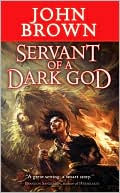Key Conditions for Suspense:
Part 27 – Patterns for Resolution
Element 4-6 & The Series Wrap Up
by John D. Brown
 The following is the final part of Key Conditions for Suspense. If you wish to start at the beginning, head to It’s All About The Reader.
The following is the final part of Key Conditions for Suspense. If you wish to start at the beginning, head to It’s All About The Reader.
Well, folks. This is it. The final post in the series. I’m going to finish identifying basic patterns for the resolution phase, summarize what I’ve presented on structure, and wrap the whole series up.
Happy, Sad, or What?
Do you remember way back in the second post of the series that I said there were three basic types of story problems? There’s danger/threat, lack/opportunity, and mystery. The first two revolve around a character’s happiness and the reader’s wish to see the good guys be happy at the end. The third revolves around the reader’s curiosity. A lot of times these two types of problems are mixed. Which means that in a good portion of stories the reader’s rooting for the good guys to be happy.
There are stories with sad endings. In these the hero fails to resolve the problem. Or he resolves it but at such a cost that the reader feels it’s a net loss.
For example, Shakespeare’s Romeo & Juliet ends with the lovers dead. Spielberg’s Saving Private Ryan ends by having our heroes save the guy they went to fetch, but at the cost of all their lives. Robin Hobb’s Assassin trilogy ends with the hero having saved the land from the awful Redship Raiders, but he’s had the snot beat out of him and has lost all he loves. He ends up broken and alone.
There are stories with happy endings. In these the hero succeeds in resolving the problem, or she realizes her original goal wasn’t really what mattered to begin with and wins happiness by changing her goal.
For example, in Star Wars the heroes solve the problem. All of the good guys survive. In fact, the villain even finds redemption at the end. In Patrick Rothfuss’ The Name of the Wind our hero finally finds security and a place among the magicians. In Dean Koontz’s The Good Guy the hero takes out the killer and those supporting him. In the movie Groundhog Day the hero wants to break out of the weird time loop he’s in. Then his goal changes to getting a particular woman in bed. But it’s only when he gives up on those goals and focuses on making a difference that he finds happiness. In the more recent Despicable Me the main character wants the status of being the greatest villain known. However, he only really finds happiness when he gives up that goal for another one that involves three little girls.
Finally, there are stories in between where the cost is high enough to count, but not enough that it tips the scales to being totally sad. It’s a mix.
For example, in The Lord of the Rings the heroes fix the problem, but Frodo sails off. It tinged the hero’s success with a loss. In Hunger Games our hero wins, but we lost Rue along the way and it colors our happiness of the win. In The Dark Knight Batman saves the city, but he loses his love and his status as a hero. In the movie The Crucible, John Proctor refuses to lie. By so doing he redeems himself and wins back his honor, but he is also sentenced to death for it. We’re happy, and we’re sad. It’s a poignant ending.
All of these types of endings can work. That doesn’t mean they will all please the same size of audience. In the USA, for example, it’s clear that most of the reading public prefers endings that lie on the happy side of the spectrum. But that doesn’t mean there isn’t an audience for sadness.
What type of ending feels right for your story?
Dilemma
There are some stories that pose a dilemma to the hero at the end. A dilemma is when you’re faced with two options, and neither is any good. Seth can save his best friend or his girlfriend, but not both. Spiderman can have Spidey powers or M.J. but not both. Sometimes these are moral dilemmas where the hero can sacrifice his morality and win or keep it and loose. In the movie High Noon, for example, the hero can live by running away and becoming a coward. Or he can stay, be a man worth his salt, and die for it.
Some story gurus say that a satisfying story MUST have a dilemma at the end. Some say the dilemma must, in fact, be a moral dilemma. However, I’ve found that is not the case. There are plenty of best-selling satisfying stories that don’t revolve around this type of decision.
For example, most stories that revolve around a mystery don’t require this. Maa Ramotswe in the #1 Ladies Detective series really isn’t faced with dilemmas, moral or otherwise. Neither are the characters in a lot of episodes in police shows like The Mentalist or CSI. But it’s not just mysteries. Lee Child’s Jack Reacher faces some dilemmas, but the ending usually doesn’t revolve around them. He certainly doesn’t have to face a lot of moral dilemmas. You know Reacher is going to choose the vigilante path each time.
Dilemmas are wonderful tools. They have the power to shoot suspense through the roof. But you don’t always have to use them. Nor do you always have to use them in the resolution. The question for you is whether a dilemma will make your story better? Will it? Or is it just a different option?
Proportion
Stories often spend a bit more time in the preparation, approach, and climax phase of this trip around the story cycle than they might in other revolutions. They do this so that the reader’s suspense and anticipation can build. Again, it’s like drinking water when you’re bone dry. You can drink it all in one gulp. Or you can savor the quenching of your thirst. Readers want to enjoy it. So we don’t want to rush this phase. However, the amount of time you spend all depends on your tastes and the type of story you’re writing. The stories below show the variety.
- The Good Guy: 22%
- A random episode of The Mentalist: 15%
- Servant of a Dark God: 15%
- Hunger Games: 12%
- Monster Hunter International: 6%
Let’s look at those stories again with their proportions for all three phases side by side.
- The Good Guy: 4-74-22
- A random episode of The Mentalist: 2-83-15
- Servant of a Dark God: 17-68-15
- Hunger Games: 8-79-12
- Monster Hunter International: 28-66-6
Clearly, there’s a wide variety of sizes that work. You might find other stories with resolutions that last longer or even shorter. The key is to look at the patterns in the stories you like.
How big will your resolution phase be?
Putting structure all together
Let’s pull back for just a moment and review the key points of the posts on structure.
1. Structure is all about problem solving, not a mystical journey or form.
2. There are three phases to solving a problem in a way that will raise reader tension. These three phases form the structure of our story.
-
1. Present the problem
2. Main character struggles to solve the problem
3. Main character resolves the problem
3. There are a number of options for what happens in each phase; this means a whole range of event sequences can be successful. There is no one plot pattern that is best.
4. Some choices that affect the presentation phase include:
- Number of scenes required to present the problem
- Whether you present the problem with a twist
- Whether you start with the central story or a subplot
- The reason the hero can’t walk away
- Proportion
5. Some choices that affect the struggle phase include:
- The type of problem your character has to solve
- Trouble progression
- Actions the villain takes to oppose the hero
- Number of stories you’re trying to tell
- Number of plot turns in each story
- What locks the hero into the final showdown
- Proportion
6. Some choices that affect the resolution phase include:
- Twists
- Character tests
- Subplots resolved in the aftermath
- How the ending raises possibilities about the future
- Happy, sad, or what?
- Dilemma
- Proportion
My challenge to you is to start looking at the stories you read and watch through the lens of the model above. Notice the options and patterns.
Other plot & structure patterns
I’ve shared a number of plot patterns and options in this series. But they are by no means all that are out there. The best place to see these are in the stories you love. Break them down into problem resolution phases and story cycle revolutions. I promise that you’ll begin to see patterns that you can use in your own writing.
In the meantime, other authors explain their models of story structure. I suggest you look at their models then test them against the stories you love. Some of the models will be helpful to you, some of them won’t be. Some will actually model how stories work. And some won’t.
And if one of these folks maintains that ALL great stories follow a specific event sequence or feature a certain type of problem or obstacle, make doubly sure you test it against actual stories. You’ll be tempted to write it down as law. But my experience is that such statements RARELY hold up. Again, the best place to learn story patterns is in the stories you love as well as those that fail to deliver. Still, I think you’ll find the following helpful.
- Algis Budrys: Writing to the Point (whole book, cheapest from Action Publishing)
- Dan Wells: on story structure
- David Howard: How to Build A Great Screenplay (the chapters on basic dramatic structure)
- Dwight V. Swain: Techniques of the Selling Writer (chapters 4-6)
- Freytag: model of dramatic structure
- Jack Bickham: Scene & Structure (whole book)
- Jack Bickham: Writing and Selling Your Novel (chapters 6-9, 16)
- James Scott Bell: Plot & Structure (whole book)
- John Vyvyan: “The Terentian Pattern” in Shakespeare and the Rose of Love (Click “View Full” at the bottom and go to first chapter of the book, or read Steven Scheer’s summary of Vyvyan in “A Theory About Shakespeare“)
- Ken Follett: “Master Class” (the bit about story turns)
- Larry Brooks: on story structure
- Lester Dent: “Master Fiction Plot“
- Marion Zimmer Bradley: “What is a Short Story“
- Robert McKee: Story (chapters 7-13)
- Stephen J. Cannell: “What is the Three Act Structure?“
Again, don’t look for the one magical plot formula. There isn’t one. Think instead of objectives, problem-solving, patterns, and options. And, always, always, always about what effect the form has on the reader.
Write a Story That Rocks!
This brings us to the end of this series. I’ve listed out all the parts below.
- Key PROBLEM conditions for reader suspense
-
Key CHARACTER conditions for reader suspense
-
Key PLOT conditions for reader suspense
-
o Part 10 – Clarity, the first principle of plot
o Part 11 – Make the problem hard to solve with disadvantages
o Part 12 – Make the problem hard to solve with conflicts
o Part 13 – Make the problem hard to solve with growing troubles & surprise
o Part 14 – Put your plot together with the story cycle
o Part 15 – Story cycle action and trouble
o Part 16 – The story cycle’s dynamo (and a little Hitchcock)
- Key STRUCTURE conditions for reader suspense
-
o Part 17 – Structure is problem solving, not voodoo
o Part 18 – The 3 phases of problem solving for suspense
o Part 19 – Use patterns, not formulas
o Part 20 – Patterns for Presentation Elements 1-3
o Part 21 – Patterns for Presentation Elements 4-5
o Part 22 – Patterns for Struggle Element 1
o Part 23 – Patterns for Struggle Element 2
o Part 24 – Patterns for Struggle Elements 3 – 5
o Part 25 – Patterns for Struggle Elements 6 & 7
o Part 26 – Patterns for Resolution Elements 1-3
o Part 27 – Patterns for Resolution Element 4 -6 & The Series Wrap Up
Remember: suspense is all about the reader. About making them worry for a character. Readers don’t want to know what WILL happen. They want to know what MIGHT happen (both good and bad) and worry about the possibilities. They want that worry to build to a pitch. And then they want a release.
There are certain things that you need to provide readers to enable them to do this. Form follows function. You need to provide a problem, a character they can be interested in and get behind, and a plot that will build the suspense and release it. However, there are a lot of options that will work.
I hope you’ve enjoyed the series. I hope it has sparked ideas in you. And I hope it’s shown you a way to study stories that you can apply to other effects in addition to suspense. May your readers always sweat (in a good way, of course).
Happiness,
John
•••
 John Brown is an award-winning novelist and short story writer. Servant of a Dark God, the first book in his epic fantasy series, was published by Tor Books and is now out in paperback. Forthcoming novels in the series include Curse of a Dark God and Dark God’s Glory. He currently lives with his wife and four daughters in the hinterlands of Utah where one encounters much fresh air, many good-hearted ranchers, and an occasional wolf.
John Brown is an award-winning novelist and short story writer. Servant of a Dark God, the first book in his epic fantasy series, was published by Tor Books and is now out in paperback. Forthcoming novels in the series include Curse of a Dark God and Dark God’s Glory. He currently lives with his wife and four daughters in the hinterlands of Utah where one encounters much fresh air, many good-hearted ranchers, and an occasional wolf.
For a list of all of the posts in this series, head to Key Conditions for Suspense: Table of Contents.


